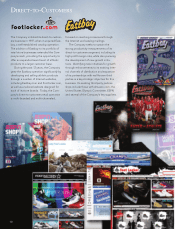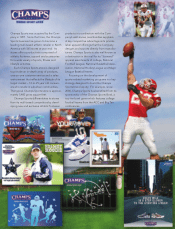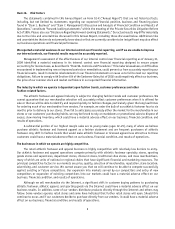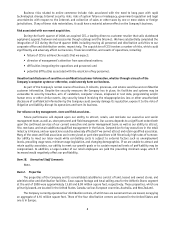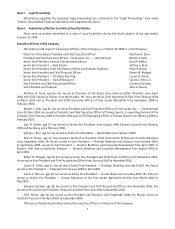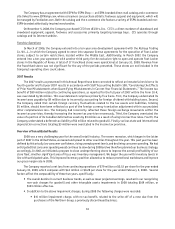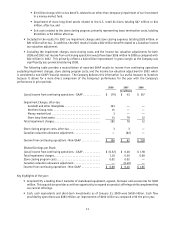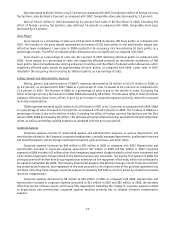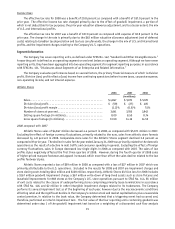Foot Locker 2008 Annual Report Download - page 22
Download and view the complete annual report
Please find page 22 of the 2008 Foot Locker annual report below. You can navigate through the pages in the report by either clicking on the pages listed below, or by using the keyword search tool below to find specific information within the annual report.6
Business risks related to online commerce include risks associated with the need to keep pace with rapid
technological change, Internet security risks, risks of system failure or inadequacy, government regulation and legal
uncertainties with respect to the Internet, and collection of sales or other taxes by one or more states or foreign
jurisdictions. If any of these risks materializes, it could have a material adverse effect on the Company’s business.
Risk associated with our recent acquisition.
During the fourth quarter of 2008, we acquired CCS, a leading direct-to-customer retailer that sells skateboard
equipment, apparel, footwear and accessories though catalogs and the Internet. We have substantially completed the
integration of CCS during the fourth quarter 2008, including moving all personnel and distribution activities to our
corporate office and distribution center, respectively. The acquisition of CCS involves a number of risks, which could
significantly and adversely affect our business, financial condition, and results of operations, including:
• failure of CCS to achieve the results that we expect;
• diversion of management’s attention from operational matters;
• difficulties integrating the operations and personnel; and
• potential difficulties associated with the retention of key personnel.
Unauthorized disclosure of sensitive or confidential customer information, whether through a breach of the
Company’s computer system or otherwise, could severely harm our business.
As part of the Company’s normal course of business, it collects, processes, and retains sensitive and confidential
customer information. Despite the security measures the Company has in place, its facilities and systems may be
vulnerable to security breaches, acts of vandalism, computer viruses, misplaced or lost data, programming and/or
human error, or other similar events. Any security breach involving the misappropriation, loss or other unauthorized
disclosure of confidential information by the Company could severely damage its reputation, expose it to the risks of
litigation and liability, disrupt its operations and harm its business.
Our reliance on key management, store and field associates.
Future performance will depend upon our ability to attract, retain, and motivate our executive and senior
management team, as well as, store personnel and field management. Our success depends to a significant extent both
upon the continued services of our current executive and senior management team, as well as our ability to attract,
hire, motivate, and retain additional qualified management in the future. Competition for key executives in the retail
industry is intense, and our operations could be adversely affected if we cannot attract and retain qualified associates.
Many of the store and field associates are in entry level or part-time positions with historically high rates of turnover.
Our ability to meet our labor needs while controlling costs is subject to external factors such as unemployment
levels, prevailing wage rates, minimum wage legislation, and changing demographics. If we are unable to attract and
retain quality associates, our ability to meet our growth goals or to sustain expected levels of profitability may be
compromised. In addition, a large number of our retail employees are paid the prevailing minimum wage, which if
increased would negatively affect our profitability.
Item 1B. Unresolved Staff Comments
None.
Item 2. Properties
The properties of the Company and its consolidated subsidiaries consist of land, leased and owned stores, and
administrative and distribution facilities. Gross square footage and total selling area for the Athletic Stores segment
at the end of 2008 were approximately 13.50 and 8.09 million square feet, respectively. These properties, which are
primarily leased, are located in the United States, Canada, various European countries, Australia, and New Zealand.
The Company currently operates four distribution centers, of which two are owned and two are leased, occupying
an aggregate of 2.55 million square feet. Three of the four distribution centers are located in the United States and
one is in Europe.


